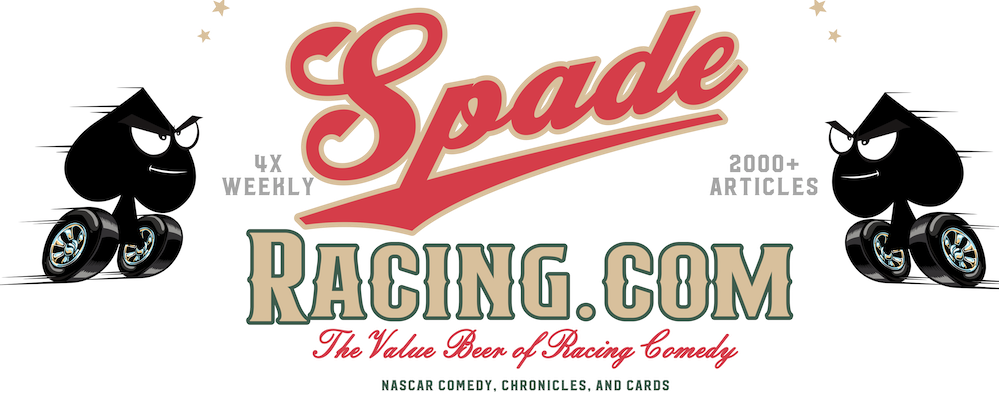It is inarguable that Nascar has a stranglehold on stock car racing in this country—the most-prominent stock car racing organization not owned by Nascar is ARCA, a minor league that has worked with Nascar for years. But in 2001 a group of investors looked to change all that by taking on Nascar at their own game. That’s right, someone actually tried to compete with Nascar.
They called themselves TRAC—Team Racing Auto Circuit
WHO WERE THEY? TRAC’s owners were a hodgepodge of investors from different backgrounds—men like longtime TV executive Robert Wussler and future politician Charles Jeter. On the motorsports side of things longtime Nascar team owner and Ford executive Michael Kranefuss was on the board of directors, while three-time Cup champion Cale Yarborough served as the organization’s spokesman. Some have even suggested that Yarborough’s involvement with the Nascar competitor delayed his entry into the Nascar Hall of Fame.
WHY WAS IT POSSIBLE? For those of you newer fans, you might have trouble believing this, but in the early-00’s, Nascar was white-hot. At that time it was the number-two professional sport in America (behind, of course, the NFL) and there had been a bidding war over the first-ever unified TV contracts. Fox, NBC and Turner (TNT) won, leaving ESPN/ABC and CBS/TNN out in the cold. A contract for TRAC to televise races on ESPN and ESPN2 was quickly reached, as was an agreement with media conglomerate Raycom Media to handle the organization’s sponsorships and advertising.
WHERE WOULD THEY RACE? The series reached an agreement with Speedway Motorsports Inc. to host eleven of its twenty estimated first-season events at SMI tracks, including Las Vegas, Bristol, Texas, and Atlanta. SMI was, and still is, owned and operated by Bruton Smith, the irascible thorn-in-the-side of Nascar since their earliest days. While Smith kept his distance from the upstart TRAC, taking no ownership stake and staying out of its affairs, he no doubt enjoyed sticking it to Nascar by offering his facilities to a brand-new competitor.
HOW WERE THEY DIFFERENT? Teams would be centrally-owned by TRAC management, but would each represent a different city or region (Atlanta, New England, etc.), similar to how Major League Soccer was started in the early-90’s. Sponsorships would be arranged by TRAC via Raycom for each team, aiming for eight-to-twelve teams of two cars each. All cars would be centrally-produced by Riley & Scott to allow for competitive-balance, similar to IROC. Instead of the sedan-style stock cars of Nascar, TRAC planned to utilize high-performance sports cars—Dodge Vipers, Ford Mustangs, and Chevrolet Corvettes. In a bit of a preview of Nascar’s future Chase/Playoff format, teams would be divided into “National” and “American” conferences, accumulating points throughout the year and allowing for a “championship race” at the end of the season. Furthermore, the organization took a page from Formula 1 by planning to limit its races to a two or three hour television window.
WHEN WERE THEY PLANNING TO START? The original target year for their first season was 2003. Eventually this got pushed back to 2004.
WHAT WENT WRONG? Money, or lack thereof. The series got as far as doing some on-track tests before money woes derailed the organization. TRAC owed most of its money to car builder Riley & Scott, which naturally stopped production. No cars meant no progress towards getting the series off the ground, and everything ground to a halt.
WHY DID IT GO WRONG? Raycom Media was unable to sell any of the sponsorships for any of the teams. The group had outsourced its marketing to them, but had retained the ownership of the prospective sponsorships themselves (in other words, sponsorship money would’ve gone directly to TRAC after Raycom got their cut, since they owned the teams outright). Furthermore it appeared as if the TV deal with ESPN was a “barter/buy”-style deal in which ESPN paid little to nothing up front, while TRAC would’ve retained the rights to sell commercial time (again, via Raycom), although this cannot be confirmed.
WHEN DID IT ALL END? August 26th, 2003. That was when TRAC announced that none of the team sponsorships had been sold (apparently they needed to sell at least six to get up and running) and that the organization was no more.
WHAT WAS THE FALLOUT? The following year a group of investors sued TRAC’s former management for mismanagement and fraud. While the organization itself claimed losses of nearly $7,000,000 over its short, abortive lifespan, the suit alleged shareholder losses at over $50,000,000. The result of this suit is unknown.
WHAT REMAINS? Virtually nothing. The whereabouts of the test cars are unknown, though they were likely repossessed for nonpayment. The website has long-since been shut down, the domain taken over by an unrelated company. ESPN eventually re-entered Nascar, only to leave again in the 2015-16 offseason. Nascar’s current “Playoff” format’s similarity to TRAC’s league-style points system is likely more of a coincidence than a copy. Arguably its biggest contribution to the world of motorsports was a valuable lesson: If you plan to compete with Nascar, prepare to lose everything.

